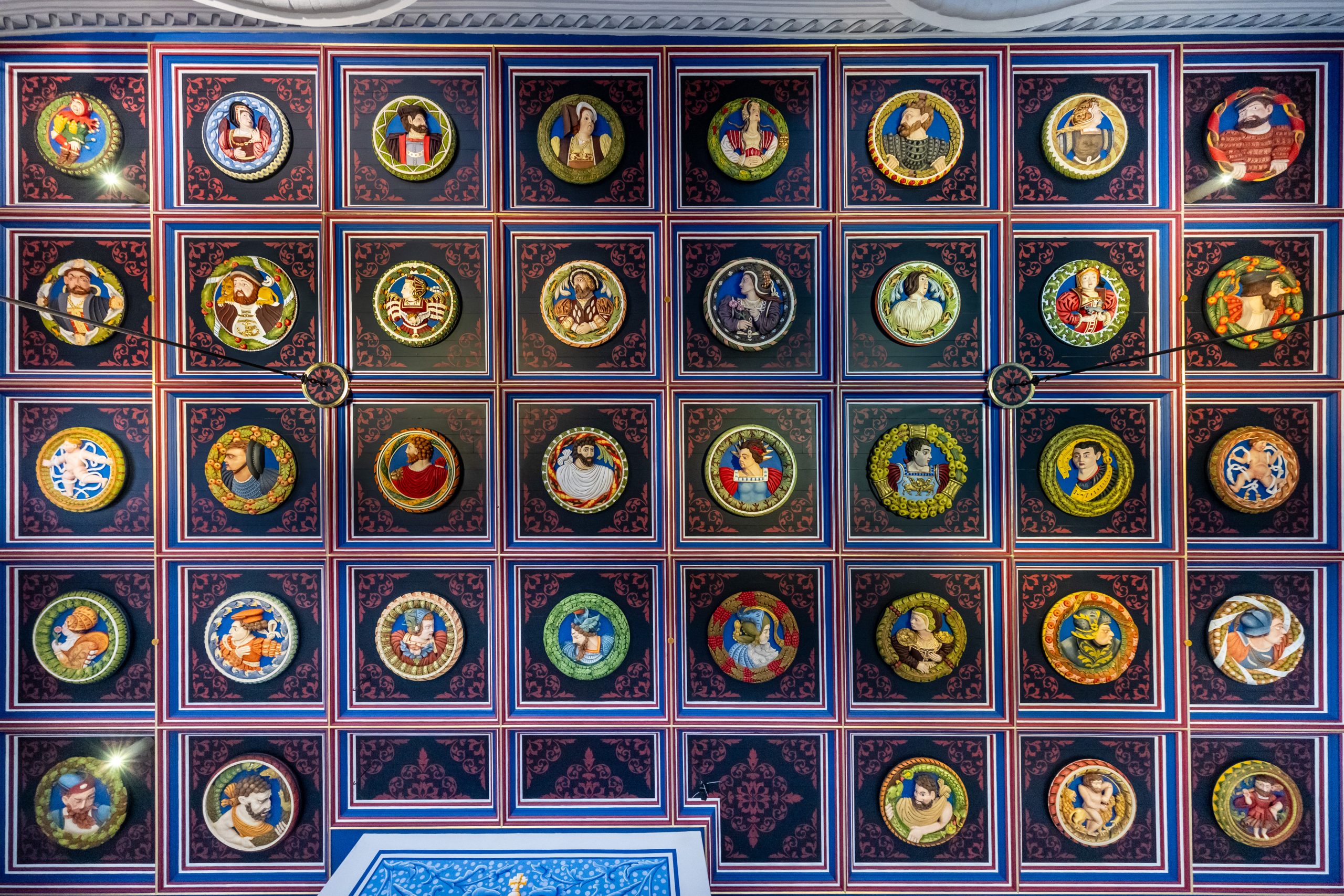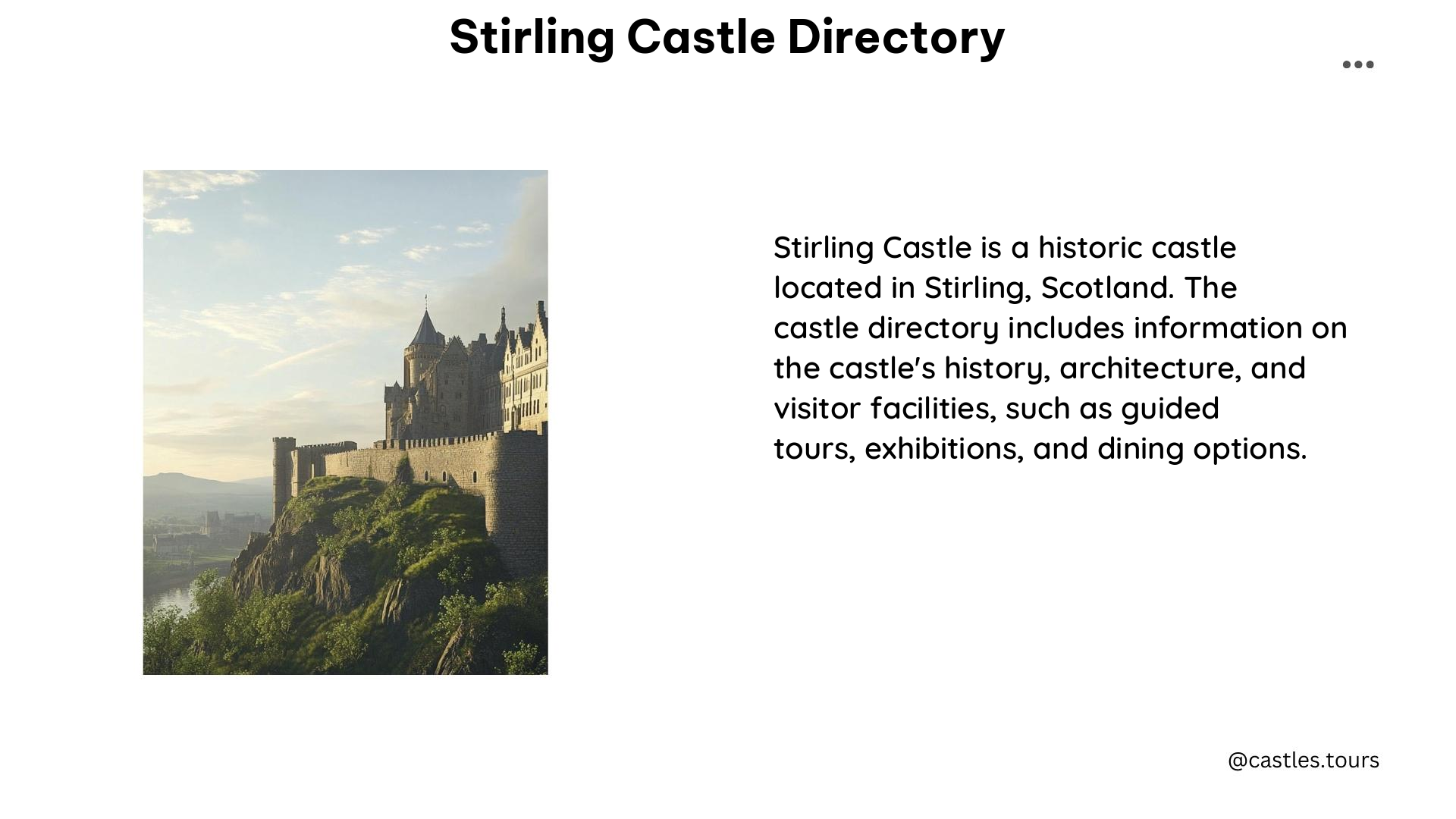Stirling Castle is a magnificent historical site in Scotland, renowned for its impressive architecture, beautiful gardens, and rich cultural heritage. As a castle touring enthusiast, this comprehensive directory will guide you through the key features, history, and visitor information to help you plan your visit to this captivating destination.
Main Enclosures of Stirling Castle

Stirling Castle is divided into several distinct areas, each with its own unique features and significance:
-
Outer Defences: The outer defences are the primary line of protection for the castle, designed to safeguard it from potential invaders. These fortifications include walls, towers, and other defensive structures.
-
Main Enclosure: This is the central and most prominent area of the castle, situated at the summit of the rock and bounded by the Forework and a defensive wall. This enclosure houses many of the castle’s most notable features.
-
Nether Bailey: The Nether Bailey is the lowest part of the castle rock, which once served as a storage area for powder magazines during the 19th century.
Captivating History of Stirling Castle

Stirling Castle boasts a rich and captivating history, dating back to around 1110. It has been a witness to numerous significant events, including the Wars of Independence with England and the coronation of Mary Queen of Scots. The castle has served as a royal residence and a symbol of Scottish independence and national pride throughout its long and storied past.
Remarkable Features of Stirling Castle
Stirling Castle is home to a variety of remarkable features that showcase its architectural grandeur and cultural significance:
-
Great Hall: Completed in 1503 for James IV, the Great Hall is the largest medieval banqueting hall in Scotland, renowned for its impressive size and ornate design.
-
Royal Palace: The Royal Palace was the childhood home of Mary Queen of Scots and has been meticulously refurbished to its original 16th-century splendor.
-
Chapel Royal: Built in 1594 for the baptism of Prince Henry, the Chapel Royal is one of the first Protestant kirks (churches) in Scotland, featuring a stunning interior.
-
Great Kitchens: The Great Kitchens offer a glimpse into the lives of the people who once prepared lavish feasts for the castle’s royal occupants.
-
Queen Anne Gardens: These beautiful royal gardens feature a flat lawn and a 200-year-old beech tree, providing a serene and picturesque setting for visitors to explore.
-
Stirling Tapestries: The castle is home to a set of seven hand-woven tapestries, known as the Stirling Tapestries, which are displayed in the Queen’s Inner Hall.
Visitor Information for Stirling Castle
To help you plan your visit to Stirling Castle, here are some key details:
-
Opening Hours: The castle is open Monday to Friday from 9 am to 5 pm. Weekends and bank holidays may have different opening hours, so it’s recommended to check for any closures on the castle’s social media channels using the hashtag #HSclosure.
-
Cost: An Explorer Pass, valid for 14 consecutive days, is the recommended option for visitors who plan to explore multiple historic sites in Scotland.
-
Accessibility: Stirling Castle offers accessible parking, lifts, and toilets, but some areas may not be fully suitable for visitors with limited mobility.
-
Dining: The Unicorn Café on-site provides a range of hot and cold drinks, as well as food options, including gluten-free and vegetarian choices.
-
Gift Shops: The castle has three gift shops that offer a wide selection of gifts and souvenirs for visitors to take home.
References
- Visit Scotland. (n.d.). Stirling Castle. Retrieved from https://www.visitscotland.com/info/see-do/stirling-castle-p245741
- Historic Environment Scotland. (n.d.). Stirling Castle: History. Retrieved from https://www.historicenvironment.scot/visit-a-place/places/stirling-castle/history/
- Historic Environment Scotland. (n.d.). Stirling Castle. Retrieved from https://www.historicenvironment.scot/visit-a-place/places/stirling-castle/.
